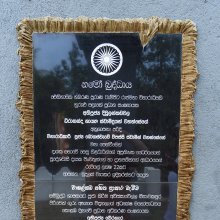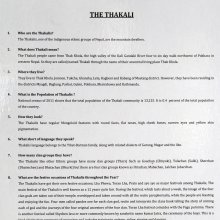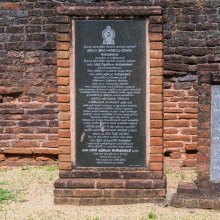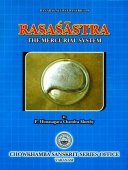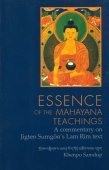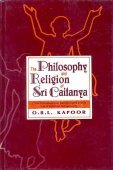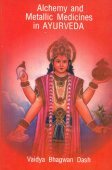Training: 2 definitions
Introduction:
Training means something in Hinduism, Sanskrit. If you want to know the exact meaning, history, etymology or English translation of this term then check out the descriptions on this page. Add your comment or reference to a book if you want to contribute to this summary article.
Images (photo gallery)
In Hinduism
Ayurveda (science of life)
Source: INSA Digital Repository: Caraka’s Approach to KnowledgeTraining in Debate was important for physicians who were bright and ambitious and who wished to establish their doctrines among peers or win recognition as royal physicians. The debates were classified as vada, jalpa and vitanda; vada seeks to ascertain truth, jalpa seeks to overthrow the opponent’s view rightly or wrongly, and vitanda seeks to pick holes in the opponent’s thesis without any attempt to present an alternative. Reading the long section on debate and the importance attached to debates in all branches of learning—philosophy, medicine, art—as a means to win peer cognition, one is tempted to believe that special training schools may have existed to hone debating skills among different professional aspirants in Ancient India.

Āyurveda (आयुर्वेद, ayurveda) is a branch of Indian science dealing with medicine, herbalism, taxology, anatomy, surgery, alchemy and related topics. Traditional practice of Āyurveda in ancient India dates back to at least the first millenium BC. Literature is commonly written in Sanskrit using various poetic metres.
Purana and Itihasa (epic history)
Source: Shodhganga: Elements of Art and Architecture in the Trtiyakhanda of the Visnudharmottarapurana1) Training Parrot and Mynas (to speak and sing) refers to one of the “sixty four kinds of Art”, according to the Kamasutra of Vatsyayana.—Cf. the Sanskrit Śukasārikāpralāpana.—Indian tradition, basically includes sixty four Art forms are acknowledged. The history of Indian Art covers approximately five thousand years which presents a rich and almost continuous record. The references of sixty four kinds of Kala (कला, kalā) are found in the Bhagavatapurana, Shaiva-Tantras, Kamasutra of Vatsyayana etc.
2) Training of the Memory (in Sanskrit: Yantramātṛkā) was considered another one of the “sixty four kinds of Art”.
3) Training of Elephants (Cf. the Sanskrit Vainayikīna) was considered as another one of the “sixty four kinds of Art”.

The Purana (पुराण, purāṇas) refers to Sanskrit literature preserving ancient India’s vast cultural history, including historical legends, religious ceremonies, various arts and sciences. The eighteen mahapuranas total over 400,000 shlokas (metrical couplets) and date to at least several centuries BCE.
See also (Relevant definitions)
Ends with: Higher Mind Training, Higher Morality Training, Memory-training, Restrained, Three Fold Training, Threefold Training.
Full-text (+549): Prashikshana, Sekhiya, Vinayana, Asekha, Adhicittashiksha, Shila, Adhiprajnashiksha, Adhishilashiksha, Three Trainings, Hastishiksha, Yugaparshvaga, Trishiksha, Sekha, Shiksha, Shyenajivin, Vinaya, Adhiprajna, Adhicitta, Adhishila, Prashikshan.
Relevant text
Search found 263 books and stories containing Training; (plurals include: Trainings). You can also click to the full overview containing English textual excerpts. Below are direct links for the most relevant articles:
The Perfection Of Wisdom In Eight Thousand Lines
Verses on the Perfection of Wisdom
Vinaya Pitaka (4): Parivara (by I. B. Horner)
The Great Chariot (by Longchenpa)
Part 10a) The brief teaching of the six perfections < [B. the extensive explanation of arousing bodhicitta]
Part 10b.4) The six perfections: Exertion < [B. the extensive explanation of arousing bodhicitta]
Part 5 - The benefits < [E. Knowing what is to be abandoned and accepted, and how the siddhis are received]
Temples of Munnur (Historical Study) (by R. Muthuraman)
The Kshatriyas, the ruling class of the Munnur society < [Chapter 2]
The Status of Women in Munnur regions < [Chapter 2]
Arulala Perumal temple daily Pujas < [Chapter 6]
Nitiprakasika (Critical Analysis) (by S. Anusha)
Training for the four-fold army (VI. 59-67) < [Chapter 4]
Special and vigorous training (Nītiprakāśikā VI. 55-8) < [Chapter 4]
Sarga IV: Muktāyudha-nirūpaṇa (52 Verses) < [Chapter 2]
Related products
(+2 more products available)
